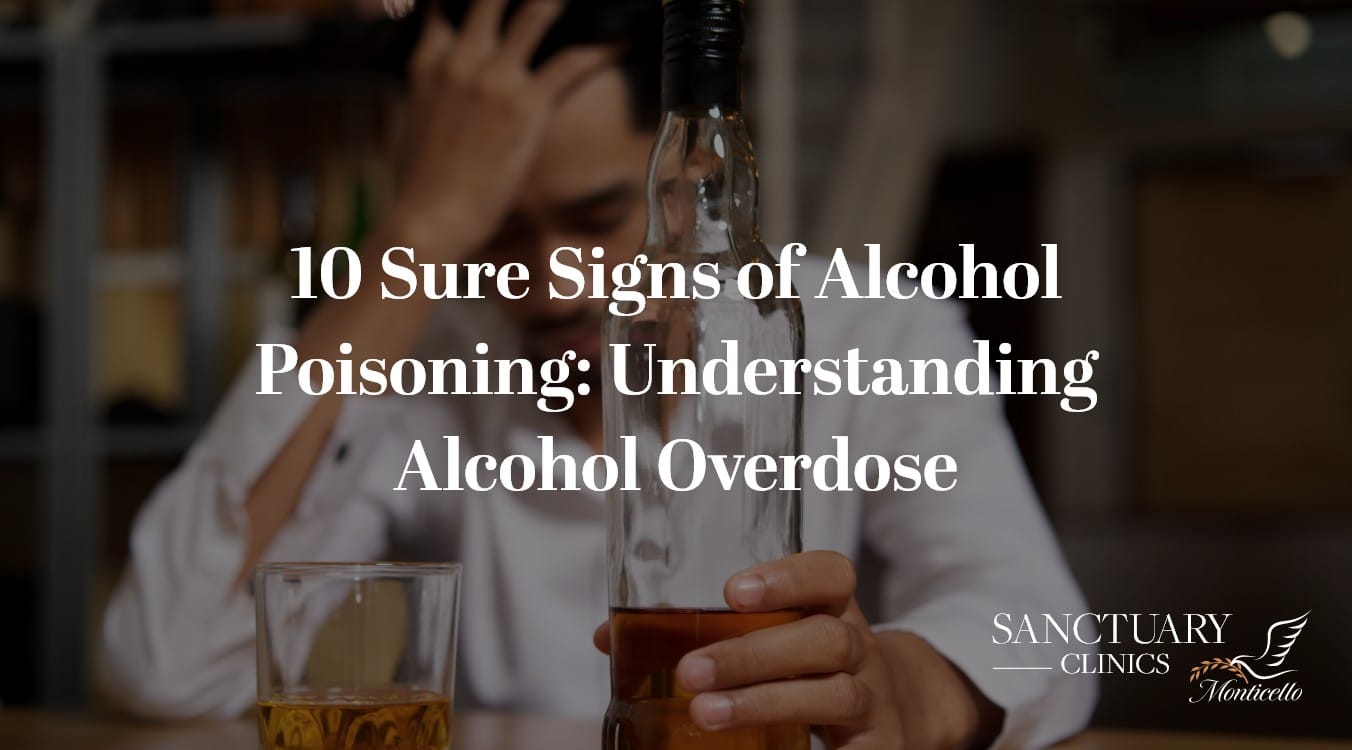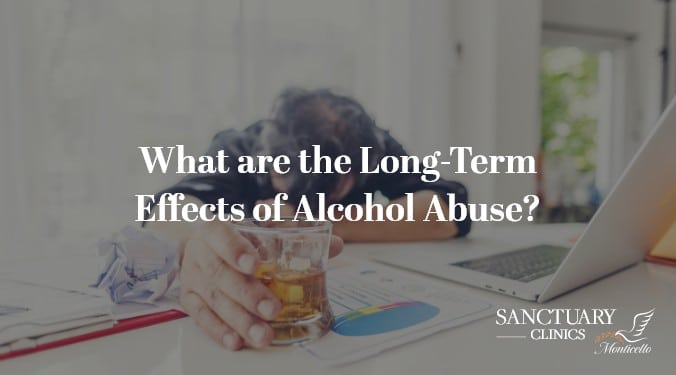Alcohol is a substance which is used in the making of beers, wines, and spirits. It is classified as a depressant drug. As one of the most available and socially accepted drugs, it can be prone to abuse. Behaviors such as binge drinking are signs of alcohol abuse. Alcohol abuse can be described as the inability to control your drinking, even when it negatively affects your life. Alcohol abuse can thus adversely affect your health, quality of life, and relationships.
In this article, we will look at the short-term effects of alcohol abuse.
Short-term effects of alcohol abuse refer to the physical and mental effects which occur within minutes of drinking to a few hours after drinking. In general, the more alcohol consumed, the more unpleasant the side-effects and the lengthier period needed for full recovery. The effects vary with each person. They can include slurred speech, headaches, dizziness, diarrhea, breathing difficulties, and distorted vision and hearing, among other side-effects.
The effects vary from person-to-person
It is important to note while the short-term effects of alcohol can often be felt within minutes of consuming an alcoholic drink, the degree to which these effects are felt will be influenced by a variety of factors such as:
- Age
As we get older, we also become less tolerant of alcohol effects. As we grow older, vital organs in our body, such as our liver, which are responsible for breaking down alcohol, work less efficiently. - Gender
Women’s bodies have less water and more fat than men’s bodies due to physiological differences between the two sexes. Water dilutes alcohol and fat retains it, so their organs are exposed to higher concentrations of alcohol for longer periods of time. Additionally, men’s bodies produce more of the alcohol dehydrogenase enzyme. This is an enzyme responsible for breaking down alcohol as it enters the blood, hence men would need to ingest a lot more alcohol to feel the effects. - Purity and amount of alcohol consumed
The purer the alcohol consumed, the faster the effects will be felt. Similarly, the more alcohol consumed in a given time, the greater the effects of the alcohol.
Additional factors include:
- Hydration levels
- Whether or not you have recently eaten
- Genetics
- Weight
- Tolerance to alcohol
- Any medications being taken while drinking
- General physical health
The human liver is the main organ in the body where alcohol is broken down. It breaks down alcohol at the average rate of one drink per hour.
In the United States, one drink translates to:
- 12 ounces of beer which is around five percent alcohol, depending on the type
- Five ounces of wine which is around 12 percent alcohol
- 1.5 ounces of spirits, or a “shot”, at about 40 percent alcohol
- Eight ounces of malt liquor, at around seven percent alcohol
All these variations contain roughly the same standard amount of alcohol at 0.6 ounces.
Anything more than this will lead to the short-term effects as follows. At first, there will be a variety of signs of intoxication such as feeling relaxed, unrestricted, and giddy. With continued consumption, this leads to other signs such as:
- Slurred speech
- Drowsiness
- Nausea/Vomiting
- Headaches
- Dizziness
- Diarrhea
- Upset stomach
- Breathing difficulties
- Distorted vision and hearing
- Impaired judgment
- Decreased perception and coordination
- Unconsciousness
- Anemia (loss of red blood cells)
- Coma
- Blackouts (memory lapses, where the drinker cannot remember events which occurred while under the influence)
- Lowered inhibitions
- Altered behavior – including risky or violent behavior and interpersonal conflicts
- Reduced sexual performance
- Changes in appetite
- Suicidal ideation
There is a way of measuring the amount of alcohol in your blood called blood alcohol content (BAC), which is a measure of alcohol in your blood as a percentage. BAC is expressed as the weight of ethanol, in grams, in 100 milliliters of blood, or 210 liters of breath. BAC can be measured by blood, breath, or urine tests. The effect of alcohol on your body will depend on your BAC. However, BAC can be different for each person depending on their age, sex, and pre-existing health conditions, even if they drink the same amount of alcohol.
The following table, as sourced from Wikipedia, shows the different BAC percentages and the corresponding changes in the body.
Progressive effects of alcohol
| BAC (% by vol.) | SI units (mmol/l) | mg/dL | Behavior | Impairment |
|---|---|---|---|---|
| 0.001–0.029 | 0.22–6.3 | 1–29 | May appear normal | Subtle effects detected with special tests |
| 0.030–0.059 | 6.5–12.8 | 30-59 | Decreased social inhibition Joyousness Mild euphoria Relaxation Increased verbosity |
Decreased attentional control |
| 0.060–0.099 | 13.0–21.5 | 60-99 | Alcohol flush reaction Reduced affect display Disinhibition Euphoria Extraversion Increased pain tolerance |
Depth perception Glare recovery Peripheral vision Reasoning |
| 0.100–0.199 | 21.7–43.3 | 100-199 | Analgesia Ataxia Boisterousness Over-expressed emotions Possibility of nausea and vomiting Spins |
Gross motor skill Motor planning Reflexes Slurred speech Staggering Temporary erectile dysfunction |
| 0.200–0.299 | 43.4–64.9 | 200–299 | Anger or sadness Anterograde amnesia Impaired sensations Inhibited sexual desire (ISD) Mood swings Nausea Partial loss of understanding Possibility of stupor Vomiting |
Amnesia (memory blackout) Unconsciousness Severe physical disability |
| 0.300–0.399 | 65.1–86.6 | 300–399 | Central nervous system depression Lapses in and out of consciousness Loss of understanding Low possibility of death Pulmonary aspiration Stupor |
Disequilibrium Breathing Resting heart rate Urinary incontinence |
| 0.400–0.500 | 86.80–108.5 | 400–500 | Coma Possibility of death Severe central nervous system depression |
Respiratory failure Heart rate Positional alcohol nystagmus |
| >0.50 | >108.5 | >500 | High possibility of death |
https://en.wikipedia.org/wiki/Short-term_effects_of_alcohol_consumption
Why should women be especially careful when drinking alcohol?
Drinking too much can have many risks for women in particular. These include injuries due to violence, heart disease, and fertility problems. Of particular importance is preventing pregnant women from drinking. This is because it can lead to miscarriage, stillbirth, premature births, fetal alcohol spectrum disorders (FASDs) and sudden infant death syndrome (SIDS).
Alcohol Poisoning
Sometimes heavy drinking can be intoxicating to the point of poisoning. When the amount of alcohol exceeds a certain level, this is considered a life-threatening emergency. Symptoms of alcohol poisoning include:
- Confusion
- Vomiting
- Seizures
- Slow or irregular breathing
- Blue-tinged skin or pale skin
- Hypothermia (low body temperature)
- Difficulty remaining conscious
- Loss of consciousness
As seen, alcohol poisoning is a serious problem, and assistance from medical experts should be sought as soon as possible.
Hangover
A hangover refers to a set of unpleasant symptoms which usually follow excessive alcohol intake. Generally, the more you drink, the higher the likelihood you’ll experience a hangover. But there are always exceptions to this. Some people can drink a lot with little to no hangover symptoms, while another person will drink one glass of alcohol and have hangover symptoms. It differs from person to person. Hangovers are caused because alcohol is toxic to the body, and the body is working to get rid of the toxins. Some of the hangover symptoms include:
- Headaches
- Diarrhea
- Nausea
- Fatigue
- Racing heart
- Dry mouth and eyes
- Difficulty concentrating
- Restlessness
The effects of a hangover may be mitigated by eating a good meal before drinking, not using other drugs while drinking, pacing yourself by aiming to drink one drink or less every hour, and drinking water between alcoholic drinks.
To cure hangovers, it is recommended to:
- Sip water/ fresh fruit juice to stay hydrated
- Eat some food. e.g. toast
- Take pain relievers
- Sleep it off
A hangover can last up to 24 hours. Medical professionals advise on refraining to drink again within 48 hours of a heavy drinking session, to allow your body to recover from the harmful effects of alcohol.
Conclusion
As seen from these short-term effects of alcohol abuse, it is important to monitor your alcohol consumption as part of a healthy diet. Alcohol consumption in the wrong manner can lead to severe physical and psychological issues, which can then translate to problems in the long run. It is important to nip the issue in the bud, and stop alcohol abuse in the early stages. Reach out for professional help through a doctor, therapist, or support group if you are suffering from alcohol abuse, or if you know somebody struggling with it.









